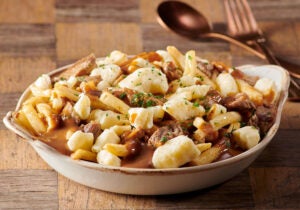If you have been involved with youth summer camps for any significant period of time, you’ve likely observed that campers’ waistlines have expanded over the years. In fact, America is in the midst of a childhood obesity epidemic— and there is increasing pressure on foodservice programs to help address the crisis.
Obese children and adolescents are likely to be obese as adults and, therefore, more at risk for heart disease, Type 2 diabetes, stroke, osteoarthritis, and a whole host of cancers. The good news, according to 2012 and 2013 data, is that childhood obesity rates have begun to decline slightly in some cities and states that are tackling the issue head on.
Schools Lead the Way
The efforts of these cities and states have been bolstered by the Healthy, Hunger-Free Kids Act of 2010, which was enacted to promote healthier eating in the 100,000-plus U.S. schools that participate in the National School Lunch and School Breakfast Program. This act updated previous meal pattern and nutrition standards, increasing the availability of fruits, vegetables, and whole grains on the school menu and setting specific calorie limits for grades K–5, 6–8, and 9–12. Schools must also gradually reduce the sodium content of meals.
Camps that participate in the USDA Summer Food Service Program (SFSP) are required to meet meal pattern regulations modeled after the Healthy, Hunger-Free Kids Act (though without the specific requirements for calories, fat, sodium, and nutrients).
For the vast majority of camps that don’t participate in SFSP, promoting healthy camp food is strictly voluntary. However, these camps can look to school programs and their foodservice distributor for guidance in expanding their healthy options.
Give Kids Choices
The trick is to offer healthier options alongside, not in place of, your usual offerings. You might offer comfort-food snacks once during the day, for example, rather than at every snack and meal time. This will allow you to emphasize healthy camp food without making campers feel as if they’re missing something. This approach will require some preparation and ordering adjustments, of course, but the cause is worth it.
Think your kids just won’t choose healthy camp foods? Consider this: They’ve spent the past two school years being exposed to nutritious and often-new-to-them foods, from whole-grain spaghetti to hummus, to kale chips—and they’ve learned how and why these foods are better for them. They’re quite possibly savvier about what they put into their bodies than any generation before them. You may be surprised at what they’d like to see on your camp menu.
Many operators of adult camps have already incorporated healthier options into their foodservice programs, driven by consumer demand. (Technomic Inc., a foodservice research firm, reported in 2011 that 47 percent of Americans want healthier restaurant options, a finding that can reasonably be extrapolated to camps and other foodservice outlets.) Those that haven’t can use the tips following as a starting point.
10 Healthy Camp Food Tips
Follow the example of schools in increasing the health quotient of your camp menu. Offer more:
- Whole-wheat breads, wraps, cereals, pastas, and snacks
- Romaine and other green-leaf lettuce varieties—on their own or mixed into iceberg lettuce salads
- Plain and carbonated waters, sugar-free flavored waters, and 100% fruit and vegetable juices
- Baked rather than fried foods
- Fresh whole fruits as well as fruit cups
- Cut vegetables with an array of colorful dips
- Fat-free milk
- Healthy snacks like trail mix, nuts, seeds, yogurt, and low-fat granola bars
- Sauces, dressings, and gravies served on the side
- Foods flavored with herbs and spices rather than salt
How to Promote Healthy Eating
Offering healthy foods is not enough—you also have to encourage campers to make healthier choices. For example:
Focus Attention. Present and display foods in a way that draws attention—place fat-free milk containers in front of whole-milk containers, put bowls of fresh fruit on tables, display the “Choose My Plate” poster in the dining hall. (Visit ChooseMyPlate.gov for printable posters and other materials.)
Teach and Taste. Make cooking a camp activity and incorporate fresh, healthy ingredients. Make a game of taste-testing healthy foods.
Make Your Garden Grow. Grow your own vegetables and herbs and incorporate them into your cooking.
Lead by Example. Encourage your staff to make healthier selections and to explain their choices to kids.
Market Healthy Cuisine. Boast about healthier food options on your website and in your marketing materials—it can be a big draw for parents and kids.



























